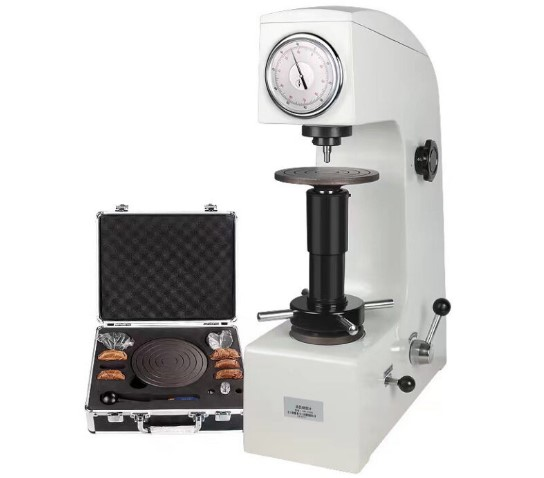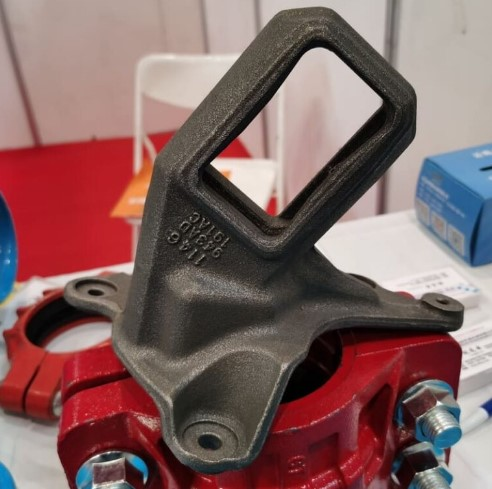Ductile iron is an exceptionally strong and versatile metal alloy used for centuries in various applications. Its high strength-to-weight ratio and excellent flexibility make it an ideal choice for many engineering projects. It is characterized by its high strength, toughness, and resistance to wear and fatigue.
Because of their excellent mechanical properties and physical properties, ductile irons are becoming an attractive option for many projects. In this article, we will look closely at ductile iron compositions and characteristics and explore how it is used in the modern world.
What is Ductile Iron or Spheroidal Graphite Iron
It is also called spheroidal graphite iron or nodular cast iron. Ductile iron is a type of cast iron modified to have better properties than traditional cast iron and gray iron. There are different types of ductile iron, including ferritic ductile iron, bainitic ductile iron, pearlitic ductile iron, and ferritic-pearlitic ductile iron.
Ductile iron production starts by introducing trace amounts of magnesium or cerium to cast ductile iron. These elements create a chemical reaction that increases the ductility of the iron. This process also improves the mechanical properties and physical properties of the ductile iron family, making it more resistant to fatigue and wear.
Austempered Ductile Iron (ADI) is an innovative material gaining traction in metal manufacturing. It is a form of ductile iron that undergoes heat treatment with a special process to improve its mechanical properties. This process, called austempering, involves heating the iron to a temperature just below its transformation point and then slowly cooling it in a special liquid bath.
Austenitic ductile iron is similar to traditional ductile iron but contains a higher content of iron carbide, chromium, nickel, and molybdenum. This combination of elements makes it much tougher and more corrosion-resistant than standard ductile iron or grey irons.
Martensitic ductile iron is created through annealing, which uses high temperatures to alter the chemical and physical structure of the iron. This process improves the ductile iron specifications to match the requirement of clients.
The Presence of Graphite Particles in Ductile Irons
One of the key components of ductile iron is graphite particles. The graphite shape depends on the alloy used. It is present in small flakes, known as graphite nodules, which are evenly distributed throughout the metal. The graphite content in ductile iron is usually between 3 and 4%.
The flake graphite irons act as a lubricant, reducing friction between the metal components. This helps to reduce wear, improve machinability, and reduce the risk of fatigue failure. The graphite also increases the metal’s ductility, allowing it to be bent and stretched without breaking.
The size of flake graphite irons within the metal matrix can also vary depending on the type of metal. Larger than those of nodular graphite and vermicular graphite particles are called lamellar graphite irons. These provide better wear resistance, while very fine graphite flakes provide better spheroidal graphite cast iron ductility.
Grades of Ductile Iron
There are several ductile iron grades available, each with its unique properties. The first two digits of the grade indicate the material’s tensile strength in terms of thousands of pounds per square inch. The second two digits refer to the yield strength, while the last two refer to the elongation percentage.
The 60-40-18 grade is the most common grade of ductile iron and has the highest tensile strength. It is used for various applications, including automotive parts, agricultural equipment, and construction materials.
The 65-45-12 grade is slightly weaker than the 60-40-18 grade but is still suitable for many ductile cast iron applications. It is commonly used for castings in bridges and buildings.
The 70-50-05 and 80-55-06 grades are the strongest grades of ductile iron and are used for applications that require high strength and durability. These grades are often used for machinery components, such as valves and pumps, and for structural components in bridges and buildings.
Ductile Iron Properties
Tensile and Yield Strength

Ductile iron has a tensile strength of up to 80,000 psi (pounds per square inch). This is significantly higher than other materials, such as steel, with a tensile strength of only around 50,000 psi. This high tensile strength makes ductile iron highly resistant to stretching and deforming.
The yield strength of ductile iron is also relatively high, ranging from 40,000 to 70,000 psi. This means that ductile iron can withstand much stress before it deforms.
The most commonly used equipment for testing the tensile and yield strength of ductile iron is a universal testing machine, also known as a tensile testing machine. This equipment is designed to measure the tension and compression of the material, and it is typically used to measure the strength of metals and other materials.
Corrosion Resistance
Ductile iron has excellent corrosion resistance, including exposure to acids, alkalis, salts, and other corrosive substances. The alloy is particularly resistant to pitting corrosion caused by accumulated corrosive substances in small pockets on the material’s surface. This type of corrosion can cause severe damage to other metals, but the superior corrosion resistance of ductile iron prevents this from occurring.
Good Wear Resistance
The combination of elements makes the ductile iron a wear-resistant material.
The wear resistance of ductile iron is due to its strength and toughness. It has a tensile strength is three to five times higher than that of ordinary gray cast iron. This is due to graphite spheroids that provide strength and higher carbon content, which increases tensile strength.
The fatigue strength of ductile iron is also a major factor in its wear resistance. The material has a higher elongation and reduction in area than ordinary grey iron, which allows it to absorb more energy before it fractures, and the ductile iron maintains its shape. This provides impact and abrasion resistance.
Uses of Ductile Iron Castings

Machine Tool Industry
The strength and ductility of ductile iron make it an ideal choice for components that require precise machining and finishing. It can withstand the high loads and stresses associated with machining, and its ductility allows for parts to be formed and shaped accurately.
In this industry, ductile iron is used to produce a range of components, such as spindles, beds, and castings. It is also commonly used to manufacture machine tool frames, housings, and gearboxes.
Piping Systems

Ductile iron pipes are made from a combination of iron and carbon, which makes them more malleable than traditional cast iron and less brittle. This makes it easier to work with and more resistant to cracking and breaking than flake graphite iron pipes.
The pipes are also much stronger than others, as they can withstand higher water pressures and temperatures.
Construction Industry
The corrosion resistance of ductile iron makes it an excellent material for constructing bridges, buildings, water and wastewater infrastructure, and other large-scale projects. It is also cost-effective and can be formed into various shapes and sizes, making it easy to customize for specific projects. In addition, it can withstand the elements and heavy loads.


